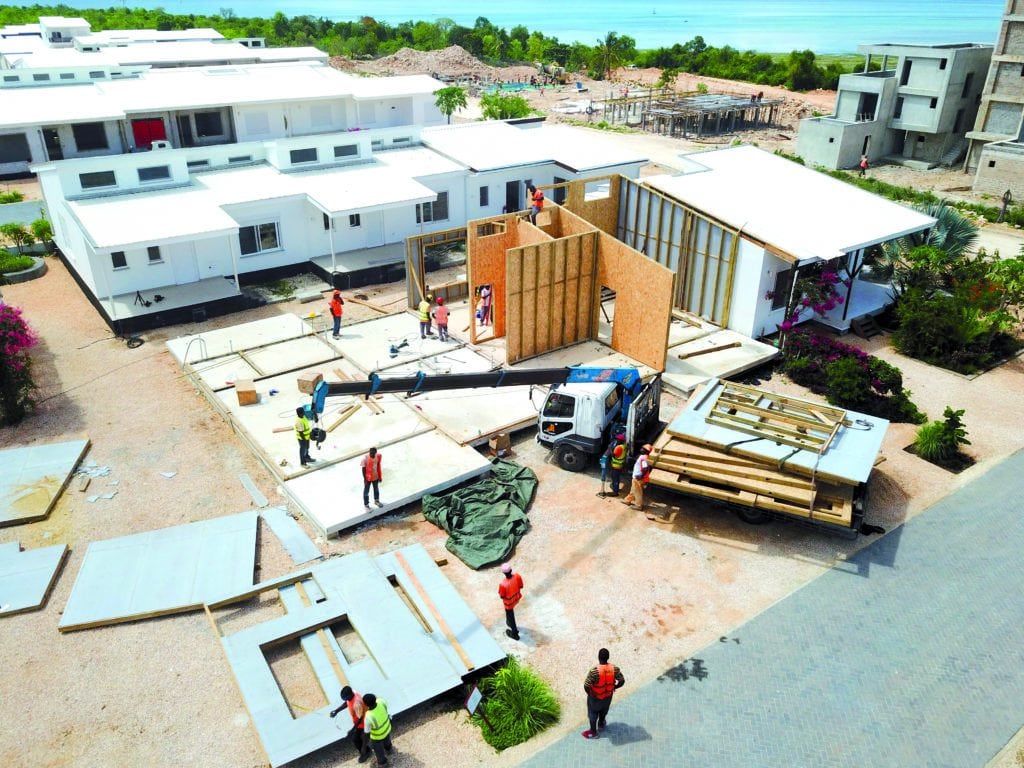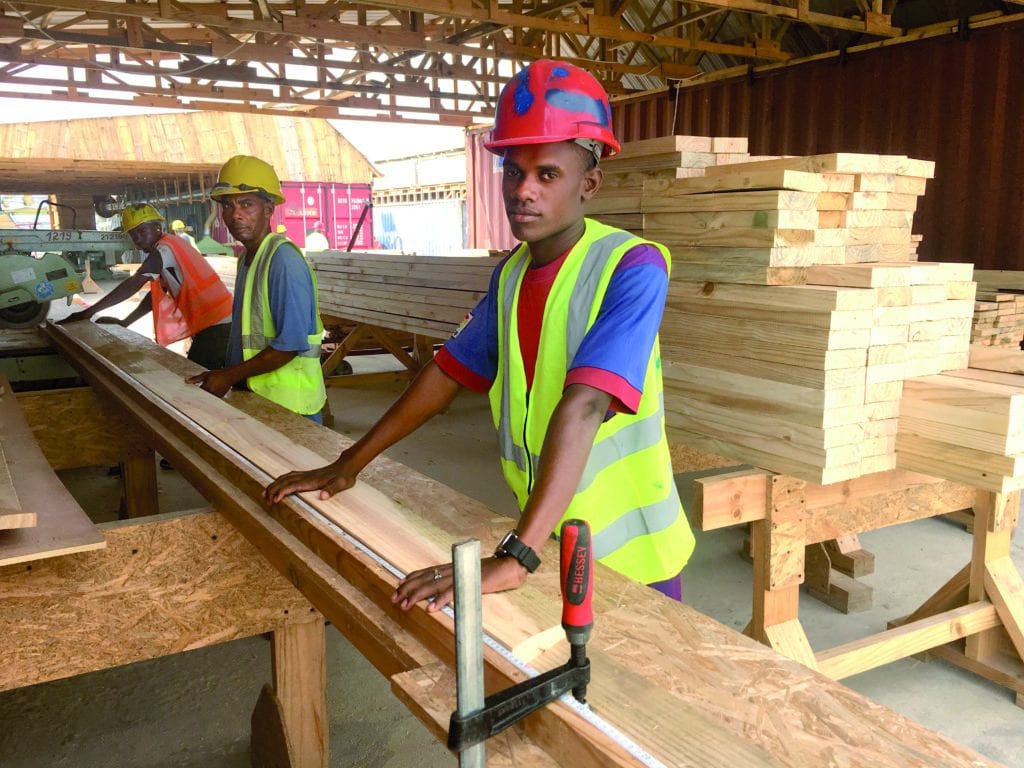Wood has many talents. The feel-good effect of the natural material is without doubt. But recently the aspect of sustainability has come to the fore. Properly managed, wood is a fully renewable resource. “Wood seems to be the construction material of the future”, says Tobias Dietzold, one of the chief developers of Fumba Town, the new eco-city on the outskirts of Zanzibar’s capital.
Presently, more than fifty of Fumba’s popular townhouses - already occupied by their happy buyers - are timber frame buildings. Under planning and now on sale, are the new low-rise Moyoni Homes set within beautiful private gardens. They consist of around hundred apartments, also with a wood structure. Each apartment, downstairs or upstairs, can be configured as a loft or 2-3 bedroom family home. The starting price is around $68,000. A third major building complex with wooden elements is being raised in Paje on the east coast. The residential leisure facility The Soul has 1-3 bedroom holiday flat on sale, starting at $47,900. The Soul will consist of more than 200 units in total.

Germany technology produced in Africa
Timber houses “used to be 10-15 per cent more costly than stone houses, but prefabrication has reduced the prices”, says engineer Thomas Just. Another advantage: “It doesn’t take more than one week to a month to assemble a wooden house on site, because everything is already built-in.” The technology used by the Volks.house company based in Zanzibar - as by international architects - are “prefabricated timber frames for the house structure plus cross laminated timber (CLT) for the ceilings”, explains Just. Together with his wife Saskia he co-owns Volks.house and works in co-operation with CPS, the developers of Fumba Town.
A wooden prefab building resembles an onion with several layers. Rock wool for insulation meets with layers of chipboard, complete with tunnels for power cables and water pipes. The prefabricated walls are joined together on the construction site. “German building technology produced in Tanzania for Africa” is the slogan of Volks.house and that says everything about the hybrid firm which blends home-grown and global knowledge with local production.
As a building material wood has indeed come a long way: Much used in medieval living-quarters in Europe, in 1599 for Shakespeare’s Globe Theatre in London and even earlier for Japanese pagodas, timber had, in recent times, become a luxury product. But that’s changing again: The current eco hype is demonstrated in spectacular buildings such as the world’s tallest timber frame building in Norway, the 85-metre-high with 18 floors; even the elevator shaft is wooden.
Ever experienced a slightly mouldy smell when opening the doors to your well-locked house after a long absence or holiday? Don’t blame the cleaner – this is what happens easily in tropical conditions with little natural air ventilation inside a stone house. But a timber house is different. “Timber houses are cooler in hot climate and warmer in the cold because they store the temperature better”, explains Thomas Just, a wood technician by profession. Other eco-benefits:
•Wood is climate-friendly in that it binds CO2. The carbon absorbed from the atmosphere by the trees is locked into the structure permanently. The production of cement does exactly the opposite, causing new emission of CO2.
•Wood insulates 15 times better than cement both against heat or cold, saving huge amounts of energy
•Wood houses need only 10 per cent of the sand used to built a cement house.

81 workers found employment
The Just couple, parents of three children, have trained and now employ 81 workers in Zanzibar, several of them women. The workplace: A 15-metres-high production hall built in the middle of the ragged bush land of Fumba peninsula in Zanzibar. A production loop - starting with timber planks and ending with elegant walls - runs almost like an assembly line in a car factory. “We called the company Volks.house, inspired by Volkswagen, the car brand”, says Saskia Just. The wood used is imported – for now. “Once there is more sustainable agroforestry in Tanzania we’d be happy to source wood locally”, she says. Innovative technology adds solid protection against termites, water and fire hazards.